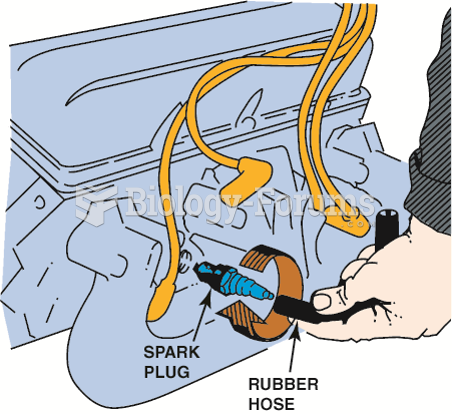|
|
|
Asthma attacks and symptoms usually get started by specific triggers (such as viruses, allergies, gases, and air particles). You should talk to your doctor about these triggers and find ways to avoid or get rid of them.
About one in five American adults and teenagers have had a genital herpes infection—and most of them don't know it. People with genital herpes have at least twice the risk of becoming infected with HIV if exposed to it than those people who do not have genital herpes.
Autoimmune diseases occur when the immune system destroys its own healthy tissues. When this occurs, white blood cells cannot distinguish between pathogens and normal cells.
The horizontal fraction bar was introduced by the Arabs.
The top five reasons that children stay home from school are as follows: colds, stomach flu (gastroenteritis), ear infection (otitis media), pink eye (conjunctivitis), and sore throat.
 Use a vacuum or fuel line hose over the spark plug to install it without danger of cross-threading ...
Use a vacuum or fuel line hose over the spark plug to install it without danger of cross-threading ...
 A typical electric motor-driven AIR pump. This unit is on a Chevrolet Corvette and only works when ...
A typical electric motor-driven AIR pump. This unit is on a Chevrolet Corvette and only works when ...





